Abstract
DeCicco, B. T. (Rutgers, The State University, New Brunswick, N.J.), and W. W. Umbreit. Utilization of aromatic amino acids by Hydrogenomonas facilis. J. Bacteriol. 88:1590–1594. 1964.—An auxotrophic mutant of Hydrogenomonas facilis was isolated which requires tryptophan, phenylalanine, and p-aminobenzoic acid (PABA) for growth. With glucose as the main carbon and energy source, the quantitative requirements for tryptophan and PABA were at normal microgram levels, but the requirement for phenylalanine was very large and approached substrate concentrations. The large phenylalanine requirement is due to a rapid oxidation and degradation of phenylalanine by the mutant. The utilization of both phenylalanine and glucose is adaptive, and the presence of phenylalanine partially inhibits the induction of the glucose-utilizing system. Wild-type H. facilis can utilize either phenylalanine or tyrosine for growth. Tracer studies indicated that during growth on phenylalanine, the aromatic ring is opened and degraded. Wild-type cells grown on either phenylalanine or tyrosine can oxidize phenylalanine, tyrosine, or phenylpyruvate without a lag. Another inducible pathway enables H. facilis to utilize either quinate or 3,4-dihydroxybenzoate for growth, and sequential adaptation studies revealed that quinate is converted to 3,4-dihydroxybenzoate during its degradation. Mutants may be obtained which can also utilize 2,5-dihydroxybenzoate for growth.
Full text
PDF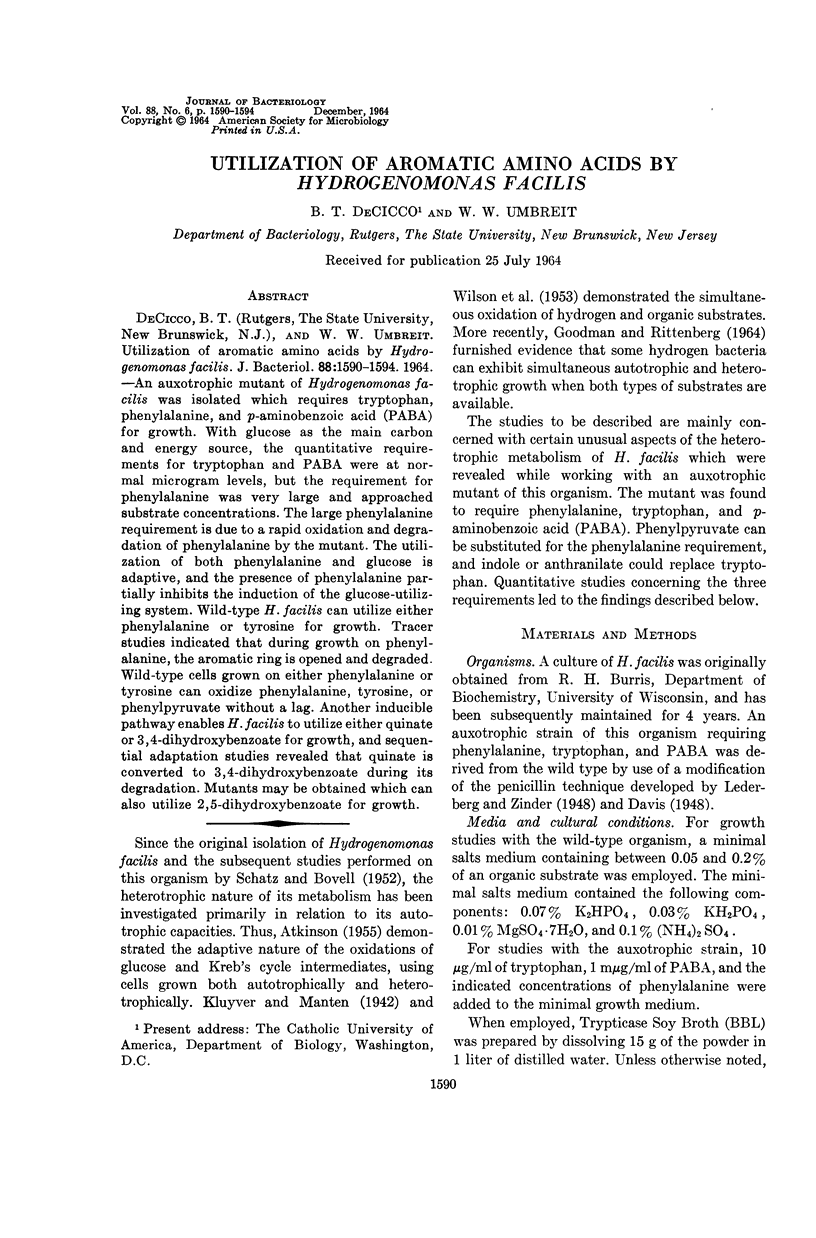
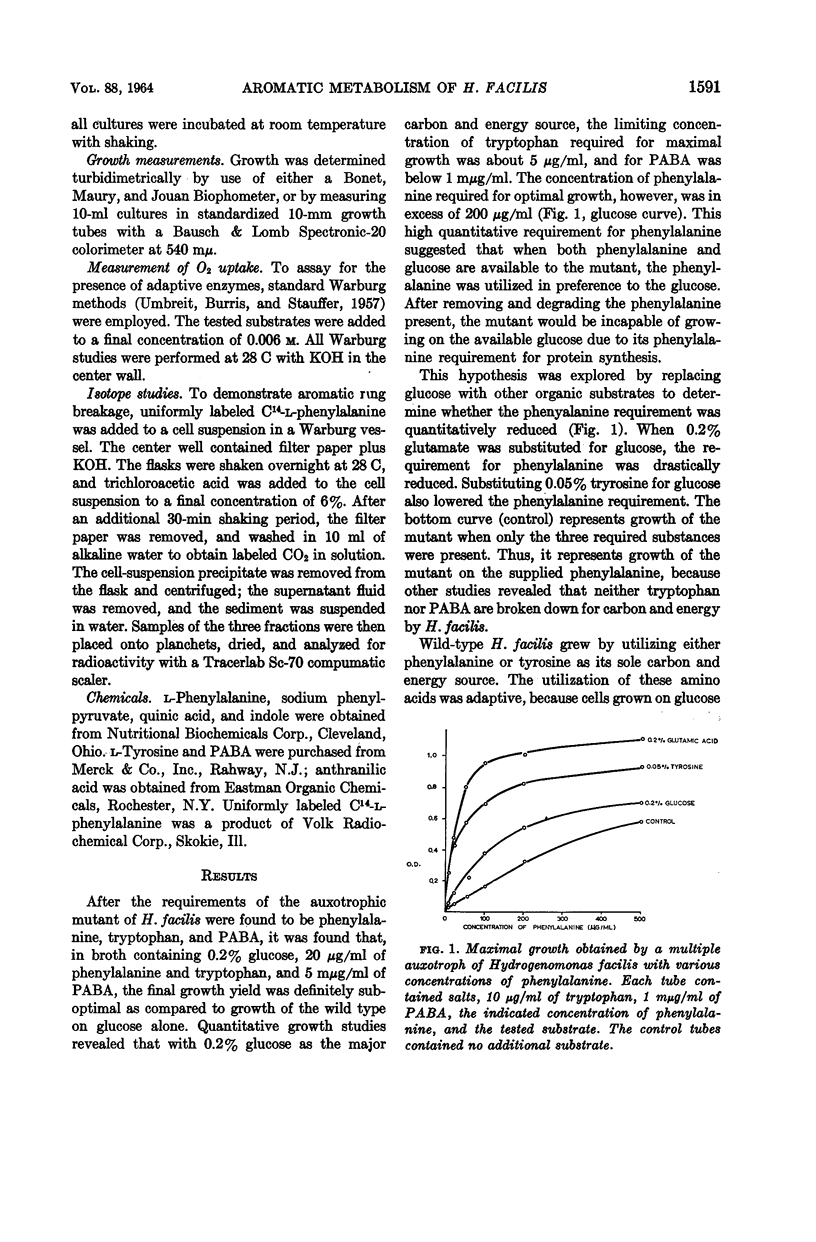
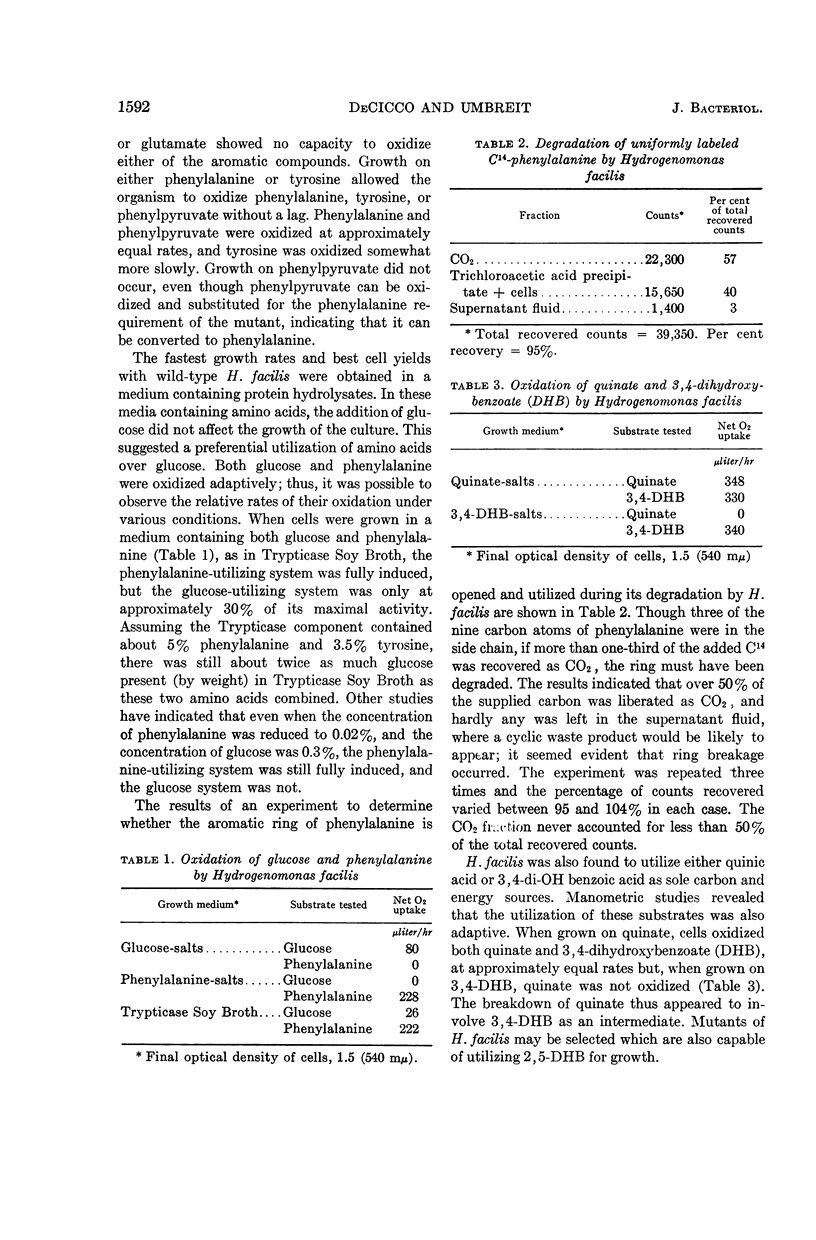
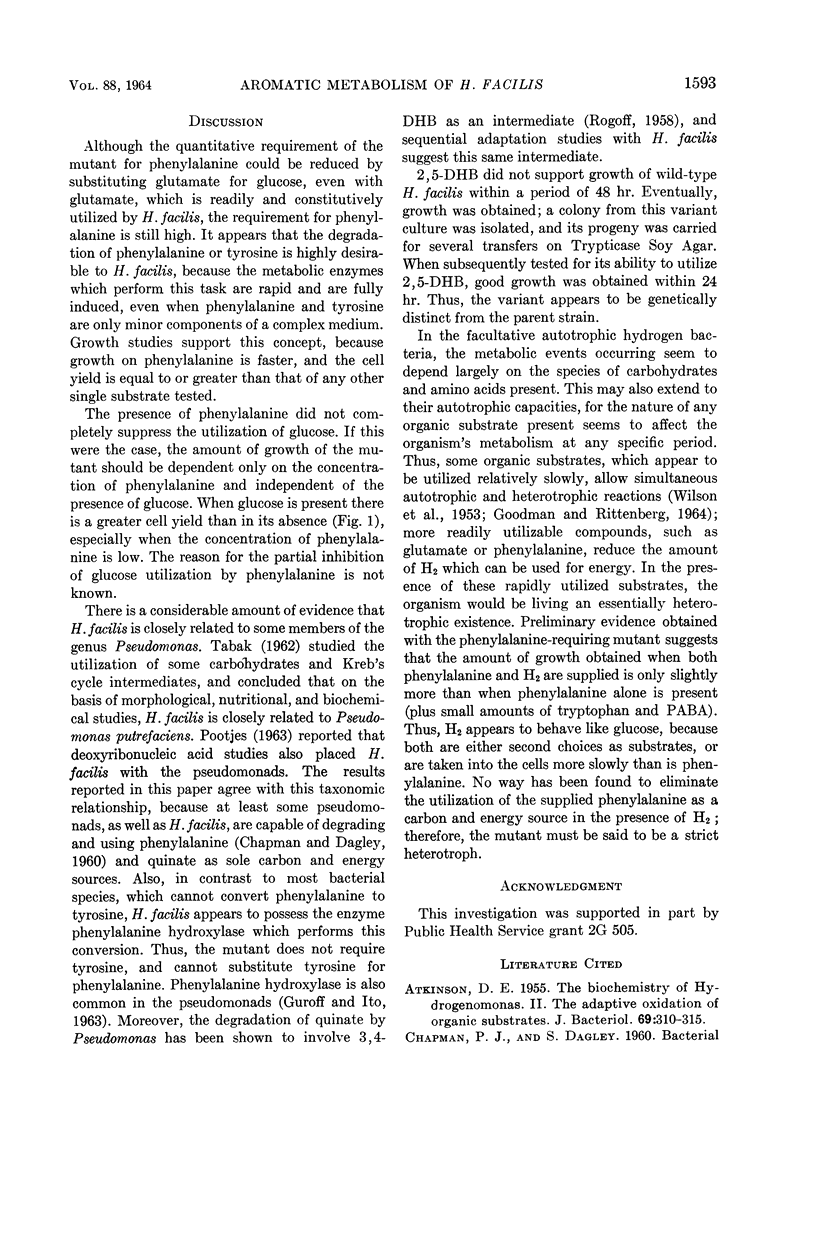
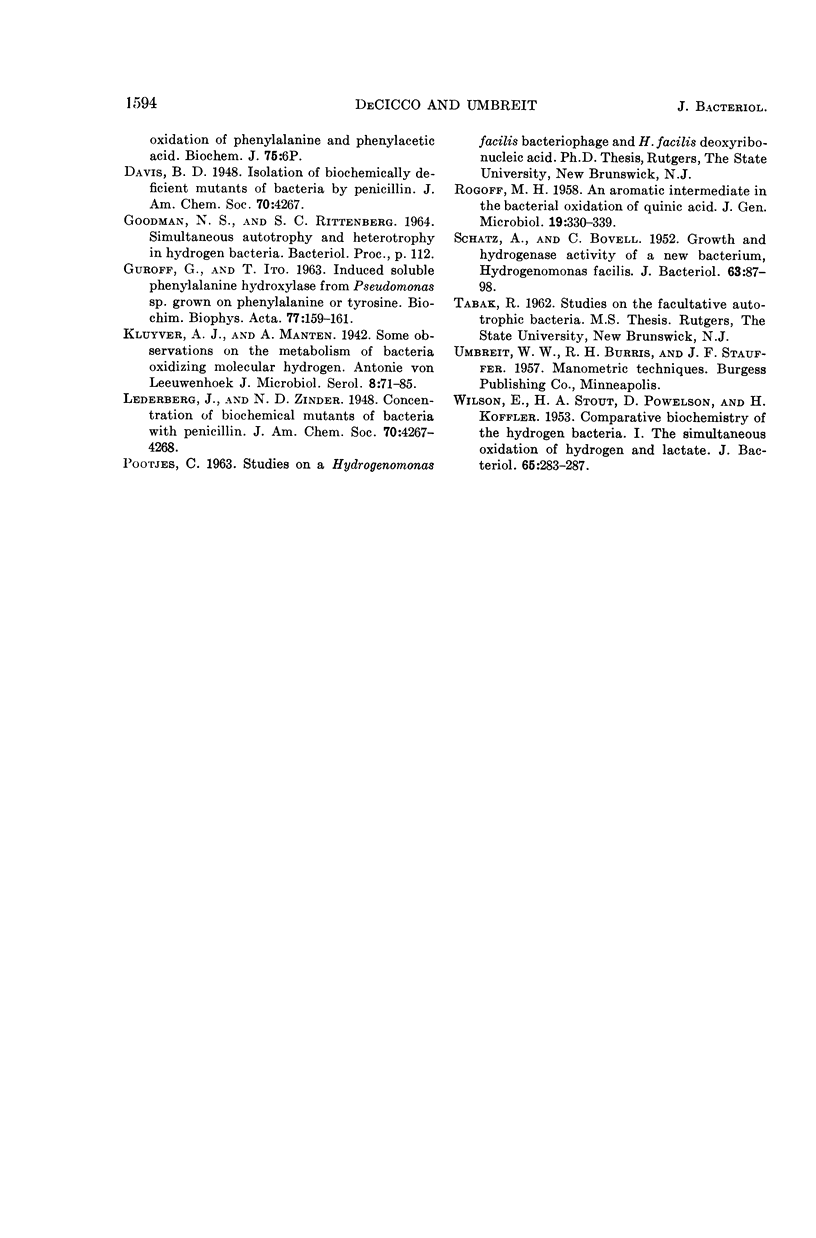
Selected References
These references are in PubMed. This may not be the complete list of references from this article.
- ATKINSON D. E. The biochemistry of Hydrogenomonas. II. The adaptive oxidation of organic substrates. J Bacteriol. 1955 Mar;69(3):310–315. doi: 10.1128/jb.69.3.310-315.1955. [DOI] [PMC free article] [PubMed] [Google Scholar]
- GUROFF G., ITO T. INDUCED, SOLUBLE PHENYLALANINE HYDROXYLASE FROM PSEUDOMONAS SP. GROWN ON PHENYLALANINE OR TYROSINE. Biochim Biophys Acta. 1963 Sep 3;77:159–161. doi: 10.1016/0006-3002(63)90485-2. [DOI] [PubMed] [Google Scholar]
- ROGOFF M. H. An aromatic intermediate in the bacterial oxidation of quinic acid. J Gen Microbiol. 1958 Oct;19(2):330–339. doi: 10.1099/00221287-19-2-330. [DOI] [PubMed] [Google Scholar]
- SCHATZ A., BOVELL C., Jr Growth and hydrogenase activity of a new bacterium, Hydrogenomonas facilis. J Bacteriol. 1952 Jan;63(1):87–98. doi: 10.1128/jb.63.1.87-98.1952. [DOI] [PMC free article] [PubMed] [Google Scholar]
- WILSON E., STOUT H. A., POWELSON D., KOFFLER H. Comparative biochemistry of the hydrogen bacteria. I. The simultaneous oxidation of hydrogen and lactate. J Bacteriol. 1953 Mar;65(3):283–287. doi: 10.1128/jb.65.3.283-287.1953. [DOI] [PMC free article] [PubMed] [Google Scholar]


